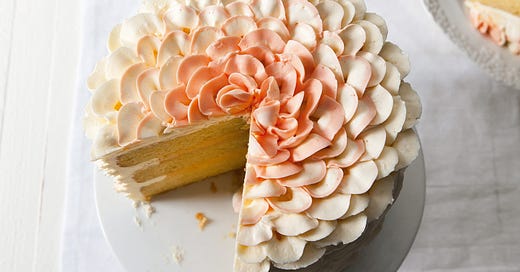Cookbook Club: Icing on the Cake
My favorite Orange Salted Honey Cake + all of this year's Cookbook Club books!
Hi Bakers!
It’s been an amazing 6+ months of this newsletter and connecting with all of you. One of my favorite parts has been sharing all of the delightful cookbooks from the many talented authors in the baking community. I hope you’ve enjoyed the recipes and interviews as much as I have. Catch the list and links to all of the 2021 Cookbook Club titles below!
If you’re joining us via social media or if a friend forwarded you today’s newsletter make sure to hit subscribe:
Today, I am sharing a little behind-the-scenes from one of my own cookbooks, Icing on the Cake. My first book, Layered, is all about layer cakes. My second, while still loaded with sky-high cakes, has all sorts of dessert recipes and tips on how to decorate them. From intricately braided pie crusts to marbled French macarons, these show-stopping desserts are equally fun to make as they are to eat.
Keep scrolling to find my interview and the recipe for the Orange Salted Honey Cake!
Keep reading with a 7-day free trial
Subscribe to Tessa Huff's Bake Club to keep reading this post and get 7 days of free access to the full post archives.




